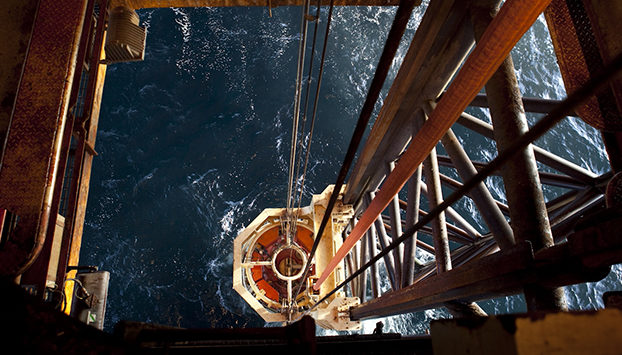
There were almost 100 oil and gas releases in the North Sea last year, according to new figures.
Oil and Gas UK (OGUK) has published its new Health and Safety report outlining the industry’s performance in 2017.
There were 255 reportable incidents – the lowest on record – however 99 of those were oil and gas releases, on a three-year upward trend.
“Major” releases with the potential for multiple casualties have plateaued at two per year since 2016.
It comes as the trade body said there is “no room for complacency” following a warning from the Health and Safety Executive earlier this year that such releases were coming “perilously close to disaster”.
The organisation said the industry is “all too aware” of the risks amid the 30th year since the Piper Alpha disaster.
The upward trend has been attributed to new legislation bringing a wider criteria for reporting such releases.
Dropped objects were the next highest cause of safety incidents, followed by fire or explosion.
The number of injuries causing a person to be off work for more than a week increased to 81, up from 65 in 2016, with slips, trips and falls being the most common cause.
There were no helicopter accidents last year, however OGUK said the industry remains “vigilant”.
Meanwhile, the leading cause of failed offshore medicals was diabetes and blood pressure, making up 29%.
Oil & Gas UK Health and Safety Manager Trevor Stapleton said: “As a major hazard industry, the UK’s offshore oil and gas sector has a clear duty to protect the health and safety of our people.
“Oil & Gas UK’s Health and Safety 2018 report provides an informed view of health and safety performance in the UK’s offshore oil and gas industry in 2017. The data shows that while we continue to see improvements across a range of trends, there can be no room for complacency.
“That’s why Oil & Gas UK is co-ordinating industry action to reduce the number of major hydrocarbon releases.
“In a year where we marked 30 years since Piper Alpha, we’re all too aware of the personal and long-lasting consequences if things go wrong.
“We’ve committed to working with the regulator, industry and, in collaboration with Step Change in Safety, to help steer efforts in the areas of process safety leadership, audit, self-verification and sustainable learning.
“As our industry emerges from a sustained downturn, the health and safety of our people remains a core value and is at the heart of all that we do.”
Recommended for you

